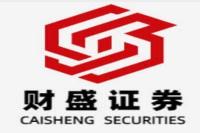Is Sell-Side Research on its Deathbed? A Veteran's Perspective on the Evolving Landscape of Securities Analysis
Meta Description: Explore the future of sell-side research with insights from a 25+ year veteran. Discover the impact of new regulations, evolving revenue models, and the path forward for analysts in this dynamic field. Keywords: Sell-Side Research, Securities Analysis, Analyst, Investment Research, Securities Industry, Investment Banking, Financial Markets, China Securities Market.
The air is thick with uncertainty. Whispers of the "sunset" of sell-side research echo through the halls of investment banks, fueled by shifting regulatory landscapes and evolving investor demands. But is this a twilight struggle, or a necessary metamorphosis? The answer, according to seasoned veteran Wu Shoukang, is far more nuanced than a simple yes or no. With over 25 years immersed in the heart of the Chinese securities market—a pioneer among the nation's first licensed securities analysts—Wu offers a wealth of firsthand experience and insightful perspective, gleaned from the trenches of the industry. He's not just an observer; he's a participant who's witnessed firsthand the seismic shifts in the financial world, authored a seminal work on the subject, The Path of a Securities Analyst, and navigated the tumultuous waters of regulatory change. His insights are not just academic; they're battle-tested strategies for survival and success in a rapidly transforming industry. This isn't a gloomy obituary for sell-side research; it's a roadmap for its evolution, filled with practical advice, strategic considerations, and a healthy dose of realism seasoned with optimism. Prepare to delve into the complexities of this critical field, gaining invaluable knowledge and actionable strategies that can help you navigate the ever-changing currents of the investment world. This isn't just another article; it's a survival guide for the modern analyst, a testament to the enduring relevance of insightful research, and a window into the mind of a true industry legend.
Sell-Side Research: Navigating the New Normal
The sell-side research landscape is undeniably undergoing a significant transformation. The impact of altered mutual fund fee structures, optimized commission allocation policies, and heightened regulatory scrutiny has created a palpable sense of uncertainty. Many are wondering: is the golden age of sell-side research over? The short answer, according to Wu Shoukang, is a resounding "no." However, the how is where things get interesting.
While acknowledging the impact of new commission regulations on brokerage firm revenue, Wu argues that these changes are, paradoxically, beneficial for sell-side research in the long run. The reduction in "soft commissions"—those often opaque payments—means that a larger share of the pie goes directly to research, thereby increasing its value and importance within the firm. This shift, he believes, is a catalyst for improvement. Brokerages will be incentivized to invest more heavily in high-quality research to secure a larger portion of the commission pool, creating a positive feedback loop that elevates the overall standard of analysis.
This isn't just theory; it's a reflection of the practical realities Wu has observed. He's seen firsthand the scramble amongst brokerages to adapt, restructuring their research departments and seeking out new leadership to guide them through this tumultuous period. The response is not stagnation, but a surge of innovation and adaptation.
The Rise of Industry Research and Think Tanks: A Suitable Path for All?
The pressure to adapt has led many firms to explore alternative revenue streams, including industry research and think tank models. These approaches offer a diversification strategy, but are they suitable for every firm? Wu’s answer is a cautious “no.” He points out that brokerage firms, as commercial entities, are primarily driven by profit. Think tank research, often serving government or specialized institutions, lacks the inherent commercial advantages needed for sustainable success within a brokerage framework. Similarly, industry research, unless closely integrated with investment banking activities, may lack the synergy to generate substantial returns. While such models might be valuable in specific contexts, such as serving a controlling shareholder, they are not a universal panacea for the challenges facing the sell-side research industry.
Navigating the Evolving Revenue Models: A Global Perspective
The discussion often turns towards adopting Western revenue models, which typically feature a more diversified approach beyond commission-based payments. These models incorporate fees for various services, consulting engagements, and the creation of proprietary research products. This approach prioritizes the quality and value of services, offering customized solutions tailored to individual client needs.
Should China adopt this Western model wholesale? Wu provides a nuanced perspective. While he acknowledges the success of this approach in certain markets, particularly in the US and Japan where commission-based research payments remain prevalent, he emphasizes the unique challenges of the Chinese market. He highlights the European experience, where regulations prohibit the use of commissions for research payments, negatively impacting smaller brokerage firms. However, larger firms and independent research institutions have managed to thrive by accessing global markets.
He cautions against a complete adoption of the European model in China, citing the lower acceptance of direct payment models in the domestic market. Maintaining the current commission-based system, he argues, is crucial for market development and talent cultivation, given the unique regulatory environment and the developmental stage of the Chinese market. The buy-side's role in setting research prices also plays a vital role in the health of the capital markets. The key, Wu stresses, is a balanced approach— a gradual, strategic evolution rather than a radical overhaul.
Analyst Evaluation: Finding the Right Balance
The evaluation of analysts has long been a point of contention. Currently, three main methods exist: objective evaluation based on research accuracy; evaluation based on the volume of research produced; and subjective evaluation via fund manager voting. The latter method, prevalent in China, has been plagued by issues of fairness, with allegations of vote-buying and other irregularities. While regulatory intervention has improved matters, challenges persist.
Wu acknowledges the positive aspects of analyst awards, citing their role in enhancing the profession's status and compensation. However, he also highlights the potential drawbacks, including the time and effort diverted from research during award seasons, the potential for unethical practices, and the use of awards as leverage in job negotiations, leading to inflated salaries. A sustainable, equitable system is essential to maintain the integrity and professionalism of the industry.
Managing Sell-Side Research Reputation: Mitigating Negative Publicity
The sell-side research sector, like any high-profile industry, is susceptible to negative media attention. This can stem from overly aggressive forecasts, intense competition, and the negative perceptions associated with high salaries. Wu candidly admits that while heightened regulation has improved matters, such issues are difficult to eliminate entirely due to the nature of the profession and individual character. He emphasizes the importance of robust internal review processes to minimize the risk of negative publicity. A comprehensive, top-down transformation of the industry is needed to address these challenges, focusing on professional standards, ethical conduct, and responsible communication.
The Future of Sell-Side Research: Embracing Globalization and Diversification
The future of sell-side research, according to Wu, hinges on embracing globalization and diversification. This means expanding research coverage and client services to encompass both domestic and international markets, catering to a global clientele. This expansion necessitates a substantial upgrade in analytical capabilities, moving towards a more quantitative approach based on robust models to gain greater international credibility.
Wu stresses the critical need to address the issue of independence, acknowledging that domestic research often suffers from a lack of trust internationally due to perceived influences from regulatory bodies and corporate interests. True globalization, he argues, requires fostering independence, objectivity, fairness, and prudence. This is a long-term endeavor, but ultimately, an indispensable one for the survival and growth of domestic sell-side research within the global financial ecosystem. He also highlights the key difference between the domestic and international research landscape, pointing out that domestic research often focuses on short-term market trends and speculative opportunities, whereas international research emphasizes a longer-term, value-driven perspective.
Returning to the Essence of Research
The ongoing transformation of the sell-side research industry compels a fundamental question: What is the true essence of research? Wu argues that it lies in a return to the core principles: a renewed focus on research itself, rather than solely on commissions and client service, and a shift from short-term price analysis toward a deeper understanding of intrinsic value. The goal is to uncover value or highlight risks, providing institutional investors with a clearer understanding of industries, companies, and markets, while also offering psychological support.
Frequently Asked Questions (FAQs)
Q1: Is sell-side research dying?
A1: No, sell-side research is evolving. New regulations are changing the revenue model, but this creates opportunities for those who adapt and focus on high-quality research.
Q2: How can analysts adapt to the changing landscape?
A2: Analysts need to enhance their quantitative skills, embrace a more global perspective, and diversify their service offerings beyond traditional commission-based models.
Q3: What are the key differences between domestic and international sell-side research?
A3: Domestic research often focuses on short-term opportunities and speculative trading, while international research emphasizes long-term value and quantitative analysis.
Q4: What is the role of analyst evaluations?
A4: Analyst evaluations can boost professional status and compensation, but require careful design to avoid bias and manipulation.
Q5: How can sell-side firms manage negative publicity?
A5: Strong internal controls, ethical conduct, and responsible communication are essential to mitigate negative publicity and maintain a strong reputation.
Q6: What is the future of sell-side research?
A6: The future lies in globalization, diversification, and a renewed focus on the core principles of high-quality, insightful research that provides real value to investors.
Conclusion
The sell-side research industry is at a crossroads. While challenges abound, the opportunities for adaptation and growth are substantial. By embracing change, enhancing analytical skills, prioritizing ethical conduct, and fostering a global perspective, sell-side analysts can not only navigate the current turbulence but also thrive in the evolving landscape of financial markets. The "sunset" narrative is premature. Instead, we are witnessing a dawn of a new era, demanding innovation, adaptation, and a steadfast commitment to the fundamental principles of rigorous, insightful research. The path ahead is long, but the journey, as Wu Shoukang suggests, is well worth undertaking.



